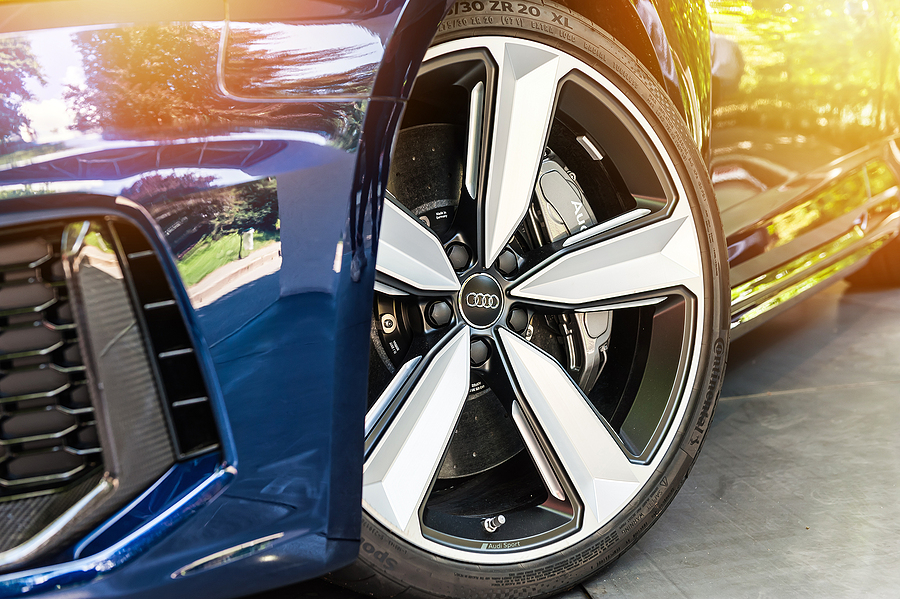Your car’s tires are its only point of contact with the road, making them one of the most critical safety components of your vehicle. While you might know to check your tire pressure, another equally important factor often gets overlooked: tire tread depth. A simple penny can tell you everything you need to know about the condition of your tires and whether it’s time for a replacement. This guide will walk you through what tire tread is, why it matters, and how to perform the simple but effective “penny test” to ensure your vehicle is safe.

What is Tire Tread and Why Does It Matter?
Tire tread refers to the grooves and patterns on the surface of your tires. These designs are not just for looks; they are engineered to provide grip and stability. The primary function of tire tread is to channel water, slush, and snow away from the tire’s contact patch with the road. This helps maintain traction and prevent your vehicle from hydroplaning, which is when a layer of water builds up between the tires and the road surface, causing a dangerous loss of control.
As you drive, the friction between your tires and the road gradually wears down the tread. When the tread depth becomes too shallow, your tires can no longer effectively disperse water. This leads to several serious safety concerns:
- Increased stopping distances: Worn tires take longer to stop, especially on wet or snowy roads.
- Higher risk of hydroplaning: Even a small amount of water can cause a vehicle with bald tires to lose traction.
- Reduced handling and grip: Your car may not respond as quickly during turns or emergency maneuvers.
- Greater chance of punctures and blowouts: A worn-out tire has less structural integrity, making it more susceptible to damage from road debris.
Maintaining adequate tire tread depth is essential for your safety, the safety of your passengers, and others on the road.
Legal Requirements for Tire Tread Depth
To ensure road safety, most US states have established legal minimums for tire tread depth. The standard legal requirement is 2/32 of an inch. If your tires have less than this amount of tread, they are considered legally bald and unsafe for driving. Driving with worn-out tires can result in fines, failed vehicle inspections, and, most importantly, an increased risk of accidents.
It’s important to note that while 2/32 of an inch is the legal minimum, safety experts recommend replacing your tires well before they reach this point. Tire performance, particularly in wet conditions, starts to decline significantly once the tread depth wears down to 4/32 of an inch.
The Penny Test: A Step-by-Step Guide
You don’t need fancy equipment to check your tire tread. The penny test is a quick, easy, and reliable method that anyone can perform. All you need is a standard US penny.
Here’s how to do it:
1. Position the Penny: Take a penny and hold it so that Abraham Lincoln’s head is pointing down into one of the tire’s tread grooves.
2. Observe Lincoln’s Head: Look at how much of Lincoln’s head is visible.
If the top of Lincoln’s head is covered by the tread, your tires have more than 2/32 of an inch of tread depth remaining. They are legally safe, but you should continue to monitor them regularly.
If you can see the top of Lincoln’s head, your tread is worn down to 2/32 of an inch or less. This means your tires are legally bald and need to be replaced immediately.
3. Check Multiple Spots: Tires can wear unevenly. Repeat the penny tire test in several locations around each tire—on the inner, outer, and central parts of the tread—to get an accurate assessment of its condition. Uneven wear could also indicate issues with tire alignment or balancing.
Book Your Scheduled Car Maintenance Today! ✏
Other Simple Tire Tread Tests
While the penny test is a great rule of thumb, here are a few other methods you can use:
The Quarter Test
This works the same way as the penny test but provides a more conservative measure. Insert a quarter with Washington’s head facing down. If the tread covers the top of his head, you have at least 4/32 of an inch of tread left. This is the depth at which many experts recommend replacing tires for optimal wet-weather performance.
Tread Wear Indicator Bars
Most modern tires have small, raised bars built into the tread grooves. These bars are typically 2/32 of an inch high. As your tires wear down, these bars will become flush with the tread surface. If you see them, it’s a clear sign that you need new tires.
Tread Depth Gauge
For the most precise measurement, you can use a tire tread depth gauge. These are inexpensive tools available at any auto parts store and provide an exact reading of your tread depth. Best of all, they are easy to use.
When to Consider Replacing Your Tires
Besides failing the penny test, other signs indicate it’s time for a new set of tires. Regularly inspecting your tires for these issues is a key part of routine tire maintenance.
- Age: Tires degrade over time, even if they aren’t used frequently. Most manufacturers recommend replacing tires every six to ten years, regardless of tread depth. You can find your tire’s manufacturing date on the sidewall as a four-digit code (e.g., “3219” means the 32nd week of 2019).
- Visible Cracks or Bulges: Cracks in the sidewall or bulges on the surface are signs of structural damage. A tire with these issues could fail at any moment and should be replaced immediately.
- Uneven Wear: If you notice that your tire tread is wearing down unevenly, it could be a sign of improper inflation, alignment issues, or a need for tire balancing. Addressing these problems early can extend the life of your tires. Regular tire rotation also helps ensure even wear.
- Vibration: If you feel a vibration in the steering wheel or through the seat, it might be due to an internal tire problem or improper balancing. Have a professional inspect your vehicle.
Stay Safe on the Road
Your tires are your first line of defense against road hazards. Regular tire care, including monthly tread depth checks and pressure monitoring, is a small investment of time that pays huge dividends in safety. The penny test is a simple, effective tool that empowers you to take control of your vehicle’s safety.
If you’ve performed the penny test and found your tread is low, or if you’ve noticed any other signs of wear and tear, don’t wait. Protect yourself and your passengers by taking action.
Schedule a maintenance checkup with our certified technicians today. We can assess your car’s condition, check for alignment and balancing issues, and help you choose the right replacement tires for your vehicle.
Related Post: The Quickest Way to Check Your Tire Pressure









